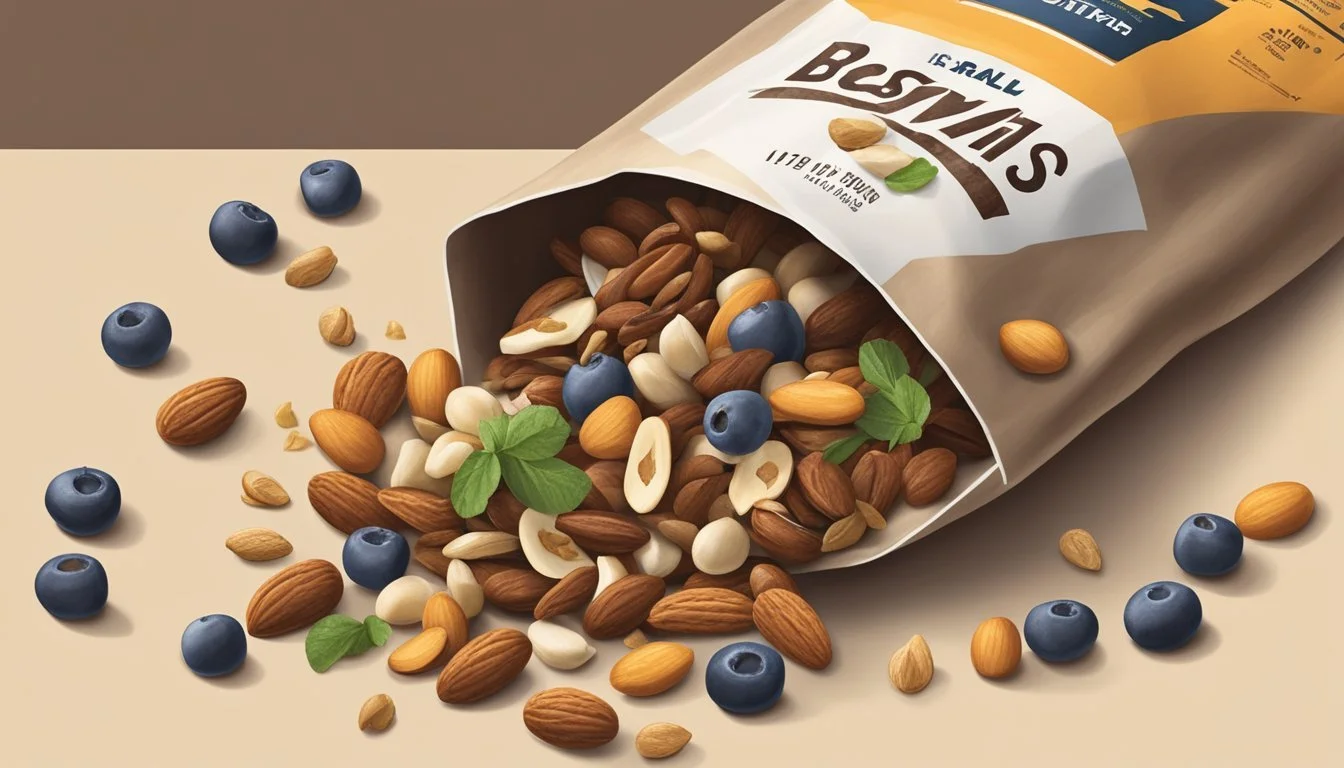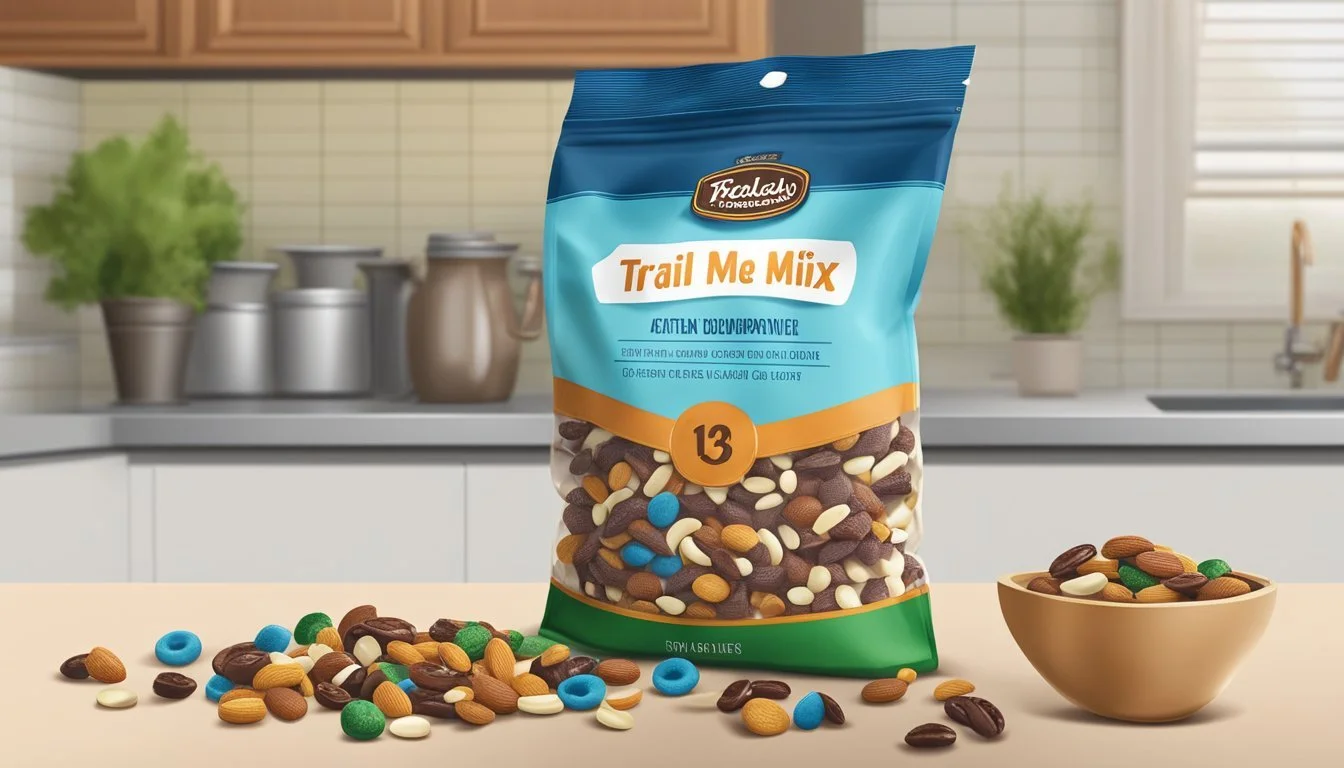Does Trail Mix Expire?
Understanding Shelf Life and Storage Tips
Ever wondered if trail mix expires? You're not alone. Many people stash away trail mix for long hikes or quick snacks, but forget to check its shelf life. Yes, trail mix does expire, but the expiration date is more of an estimate than a hard rule.
It's important to assess the quality and freshness of your trail mix. Look for signs such as a rancid odor or changes in texture. If the nuts in your mix become soft, it's an indication that the trail mix has likely gone bad.
Proper storage techniques can significantly extend the shelf life of trail mix. Keeping it in a refrigerator or freezer can preserve its freshness for months or even years. When stored correctly, an unopened package can last up to a month at room temperature, and much longer when refrigerated or frozen.
Understanding Trail Mix
Trail mix is a popular snack option that combines various ingredients to offer a balance of taste and nutrition. Key components often include nuts, dried fruits, chocolate, and seeds, which contribute to its health benefits and appeal.
Composition of Trail Mix
Trail mix typically consists of a combination of nuts, dried fruits, chocolate, and seeds. Nuts like almonds, cashews, and peanuts provide healthy fats, protein, and essential vitamins such as vitamin E.
Dried fruits like raisins, cranberries, and apricots add natural sweetness and fiber, aiding digestion. Chocolate chips or chunks often serve as a treat component, offering a quick source of energy. Seeds such as sunflower seeds or pumpkin seeds contribute additional nutrients, including protein and minerals like magnesium.
Importance of Freshness and Quality
Maintaining the freshness and quality of trail mix is crucial for both taste and nutritional value. Trail mix can last about one month at room temperature if unopened. Once opened, refrigeration extends freshness to 3-6 months, and freezing can preserve it for up to two years.
Storing trail mix correctly ensures that the nuts and seeds do not become rancid and the dried fruits retain their texture and taste. Fresh trail mix retains its crunchy and chewy textures, enhancing the snacking experience, while also ensuring the integrity of its nutritional content.
Effects of Spoilage on Nutrition
When trail mix spoils, its nutritional value can deteriorate significantly. Rancid nuts lose their healthy fats and can develop harmful compounds. Moldy or off-smelling dried fruits indicate a loss of vitamins and minerals.
Spoiled seeds can also contribute to a decline in the overall nutritional profile of the mix. Consuming spoiled ingredients not only affects taste but can also pose health risks. Therefore, checking for spoilage indicators like changes in smell, taste, or the presence of mold is essential.
By understanding the composition, importance of freshness, and effects of spoilage, consumers can enjoy a nutritious and delicious trail mix that offers a balanced snack full of protein, fiber, and essential nutrients.
Shelf Life and Storage
Trail mix, known for its nutritious ingredients and long-lasting qualities, can stay fresh for extended periods when stored correctly. It’s essential to understand its shelf life, how to store it properly, and the importance of suitable packaging.
How Long Does Trail Mix Last
Trail mix commonly maintains its quality for up to six months when stored in ideal conditions. The shelf life can vary based on the ingredients used. For instance, mixes containing fresh or dried fruits may spoil faster compared to those with just nuts and seeds.
Proper storage in an airtight container can further extend freshness, preventing exposure to air and moisture. Generally, if kept away from heat and light, trail mix remains safe for consumption well beyond its expiration date, often staying edible for months.
Optimal Storage Conditions
To maintain the best quality, trail mix should be stored in a cool, dry place like a pantry or cupboard. Airtight containers are crucial as they prevent moisture and air from affecting the ingredients, reducing the risk of spoilage.
Avoid direct exposure to light and heat as they can degrade the flavor and texture of the trail mix. For longer storage, refrigeration or even freezing can be viable options. Refrigeration helps to keep oils in nuts from becoming rancid, while freezing can prolong shelf life up to a year.
The Role of Packaging
Packaging plays a vital role in preserving trail mix. Using airtight containers is recommended to block out moisture and air. Vacuum-sealed bags are particularly effective for this purpose.
Resealable bags are useful for convenience and maintaining freshness after initial opening. Materials that protect against light, like opaque containers, help in maintaining the quality of ingredients such as dark chocolate chips found in some mixes. Additionally, proper labeling of storage dates can help track shelf life and consumption timelines effectively.
Signs of Degradation
Trail mix is a popular snack, but it can deteriorate over time. Key indicators of such degradation include rancidity, mold, changes in texture and flavor, and potential nutritional losses.
Identifying Rancidity and Mold
Rancidity occurs when the fats in nuts oxidize, leading to an unpleasant, sharp smell. This is distinct from the usual nutty aroma. Mold can also form if there’s moisture in the storage environment.
Visual Clues:
Mold or fuzz on nuts and dried fruits
Discoloration of ingredients
Smell Test:
Rancid, musty, or sour odors
Changes in Texture and Flavor
Texture and flavor changes are clear signs that trail mix is past its prime. Nuts should be crisp, and dried fruits should be slightly chewy.
Texture Changes:
Nuts becoming soft or rubbery
Dried fruits turning tough or overly hard
Flavor Shifts:
Bitter or off-tasting nuts
Dried fruits losing their sweetness
Nutritional Losses
As trail mix ages, its nutrients can degrade. This is especially noticeable with vitamins that are sensitive to light and air, such as Vitamin E in nuts.
Oxidation Effects:
Loss of vitamins and antioxidants
Changes in Nutritional Content:
Protein and healthy fat degradation
Proper storage can mitigate these losses, but consuming trail mix within its shelf life ensures maximum nutritional benefits.
Safety and Health Considerations
Maintaining the freshness and quality of trail mix is essential to maximize its health benefits and minimize potential risks. This guides the preservation and enjoyment of this popular snack.
Preventing Foodborne Illnesses
Proper storage of trail mix is critical to preventing foodborne illnesses. Keep trail mix in an airtight container to avoid exposure to moisture, which can promote the growth of bacteria.
Ideal Storage Conditions:
Temperature: Store in a cool, dry place.
Light: Protect from direct sunlight.
Inspect trail mix periodically for signs of spoilage, such as mold or unusual odors.
Health Benefits of Fresh Trail Mix
Fresh trail mix offers numerous health benefits, primarily due to its nutrient-dense ingredients. Nuts like almonds and cashews provide healthy fats and proteins, while dried fruits like raisins add natural sweetness and vitamins.
Key Nutrients:
Nuts: Rich in healthy fats and proteins
Seeds: Source of fiber and antioxidants
Dried Fruits: High in vitamins and minerals
Consuming fresh trail mix can support heart health, provide sustained energy, and contribute to a balanced diet.
Potential Health Risks of Expired Snacks
Consuming expired trail mix may pose health risks. Over time, nuts and seeds can become rancid due to oil oxidation, potentially leading to digestive issues. Additionally, stale products may harbor harmful bacteria or mold.
Signs of Expiry:
Texture: Dry or rubbery
Smell: Sour or musty odor
Expired trail mix often loses its nutritional value and can provide a less enjoyable eating experience. Always check expiration dates and store properly to minimize health risks.
Special Topics in Trail Mix
Exploring the nuances of both homemade and store-bought trail mix, examining the considerations for different outdoor activities, and highlighting ways to adapt trail mix recipes for various preferences and needs.
Homemade vs. Store-Bought Trail Mix
Homemade trail mix offers the advantage of customization. This allows for control over ingredients, making it possible to avoid allergens or unwanted additives. It often consists of basic components like nuts, dried fruit, and granola, allowing for adjustments in saltiness, sweetness, and spice levels.
In contrast, store-bought trail mix provides convenience. It typically has a longer shelf life due to preservatives but might include added sugars or artificial flavors that some people prefer to avoid. The consistency and variety in store-bought mixes ensure that there is something for everyone, which can be especially beneficial for quick decisions or bulk buying for large groups.
Trail Mix for Outdoor Activities
When considering trail mix for outdoor activities like camping and hiking, it's essential to focus on portability and nutritional balance. Trail mix designed for these activities should be lightweight yet energy-dense. Including high-calorie, nutritious components like nuts and dried fruit can provide sustained energy without taking up much space.
For hikes, adding elements like dark chocolate or seeds can offer quick energy boosts. For camping, incorporating savory items like spiced nuts can serve as a more satisfying and varied snack. It's crucial to consider the climate as well; ingredients that melt or spoil in heat should be avoided in favor of more stable options like dehydrated fruits and sturdy nuts.
Adapting Trail Mix Recipes
Adapting trail mix recipes involves tweaking ingredients to suit different dietary preferences and occasions. For a healthier mix, minimizing sweets and focusing on raw nuts, seeds, and dried fruits with no added sugar is effective. Adding spices like cinnamon or cayenne can enhance flavor without extra calories.
For a more indulgent version, incorporating chocolate chips, candied fruits, or yogurt-covered nuts can make the mix more appealing for casual snacking. Additionally, adhering to specific diets can be managed by selecting gluten-free grains for those with gluten sensitivity or avoiding peanuts for those with allergies, opting instead for almonds or cashews.
Practical Tips for Trail Mix Consumers
Selecting and storing trail mix properly ensures that it remains fresh and safe to eat. Key considerations include picking the right mix and using optimal storage techniques.
Selecting the Right Trail Mix
When choosing trail mix, pay attention to the expiration dates. Even though trail mix can be consumed past this date if stored correctly, its quality might decline. Opt for mixes that contain natural preservatives, like salt, to extend their shelf life.
Inspect the list of ingredients. Look for high-quality nuts, dried fruits, and minimal added sugars. Avoid trail mixes with excess preservatives or artificial ingredients. Simple ingredient lists usually mean fewer potential contaminants.
Buy from trusted brands and ensure the packaging is intact. Damaged packages can be an invitation for pantry bugs and other contaminants.
Extending Shelf Life
Proper storage is crucial for maintaining the freshness of trail mix. Use airtight containers to keep out air and moisture, which can lead to spoilage and attract insects.
Store your trail mix in a cool and dry place. Heat and humidity can cause the oils in nuts to go rancid. For longer-term storage, consider refrigerating or freezing the mix. This can extend freshness for several months, though freezing might affect texture.
Label the container with the purchase date to keep track of its age. Avoid opening and closing the container frequently, as this introduces oxygen that can degrade the contents.
By following these tips, trail mix enthusiasts can enjoy their snacks for a longer period without compromising quality or safety.








